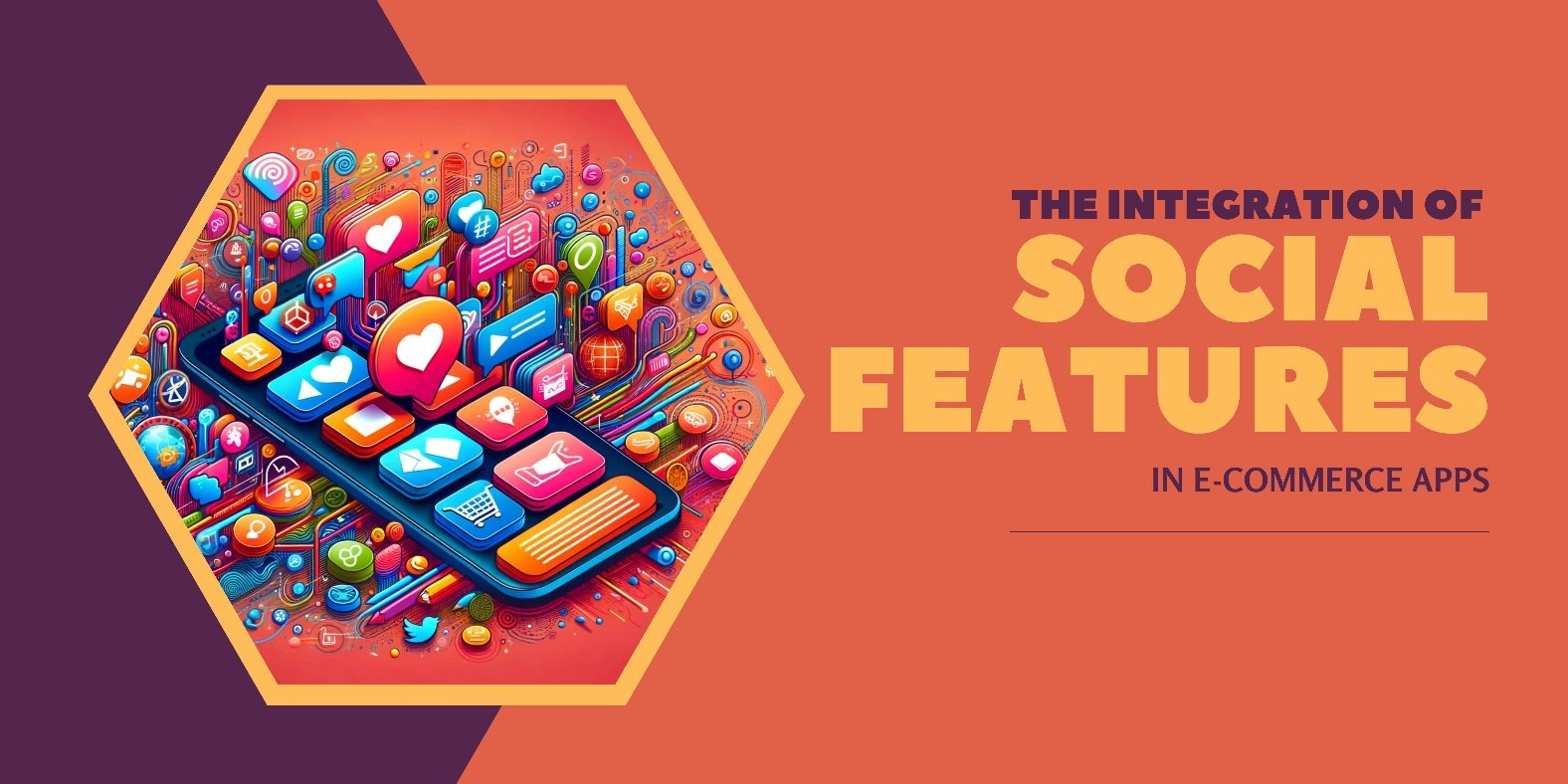The changing nature of e-commerce is a revolutionary entity that has added social elements that contribute to prominent societies. Technology and shifts in customer buying patterns are contributing to a paradigm change in online shopping tradition. According to statistics, worldwide online retail sales may surpass $7 Trillion by 2025. So, this article explores the dynamic world of social commerce within which e-commerce apps are attempting to integrate various social aspects to create unique, personalized and engaging material for consumers.

Livestream shopping
Livestream shopping is one of the most significant developments in social integration to e-commerce applications. Livestream shopping is a phenomenon that incorporates elements of live video and internet purchase convenience. Streaming video allows online retailers to show off their goods in real-time while also offering two-way communication between viewers and presenters who can answer questions and complete transactions. This interactive style is creating a new dimension in the purchasing process, which has now become more exciting and dynamic.
Shoppable posts and stories
E-commerce platforms are capitalizing on social media integration into our daily lives with shoppable posts and stories. Revery Trags Instagram and Facebook have only just started allowing brands to tag products in posts. Customers can see what they like without leaving the app but buying it. Such a smooth link blurs the lines between social networking and online shopping, providing consumers with an almost frictionless mobile shopping experience.
Influencer-driven sales
Currently, more than anything else, e-commerce app development companies are partnering with celebrities to boost sales as the power of social media influence grows. Social media and online buying have created a new dimension, which e-commerce companies are utilizing by teaming up with influencers to get special coupons and product recommendations.
2. Building Brand Communities and Fostering Connection
Interactive Features
So, an increase in the number of interactive apps is helping e-commerce companies do business with consumers. Such elements like live question-and-answer sessions, polls, and quizzes make the experience more engaging. User engagement is encouraged on such E-commerce platforms, fostering a sense of belonging and ‘community’ where buying together changes to something done collectively.
User-generated content (UGC)
One of the most critical components in modern advertising campaigns is user-generated material. It is how e-commerce app users can now share their experience in more meaningful ways, for instance, reviews, images and videos. People are likely to trust this user-generated material and buy the brand. Customers become loyal brand advocates who breathe life and pregnancy into the community.
Group purchase and social gifting functionalities deepen the social dimensions of shopping. Users can establish a cooperative shopping way if they buy in bulk and share the savings. In contrast, there is social giving as one of the functions of an application that enables users to make purchases and send gifts to friends without having to leave the app. By including these various E-Commerce app features, shopping is also made a team-based activity where the intrinsic psychological pleasure of commonness enhances its charm.
3. Personalized and Immersive Experiences
AI-Powered recommendations
Modern Artificial Intelligence e-commerce apps for product recommendations are changing the game. Artificial intelligence systems can assist in the provision of personalized recommendations by analyzing users’ actions, tastes and purchasing patterns. This way, user experience is enhanced, and the possibility of conversion increases as well. Ecommerce businesses are investing heavily in artificial as they look to create a more natural and personalized shopping experience.
Augmented reality (AR) for product visualization
One of the disadvantages related to online purchases is that people need to be able to touch things. E-commerce apps are addressing this challenge by using AR technology to enable the visualization of products. Virtual try-ons can provide an opportunity for users to dress up in clothes virtually, see how furniture would fit their home interiors, and even see samples of what different cosmetics look like. Through augmented reality AR, the buying experience is improved because customers are given a more realistic and interactive preview of the product.
Gamification and rewards
Gamification features in most e-commerce apps create a sense of enthusiasm and fun among consumers; they keep on engaging with them. When an application has stuff like a loyalty program, challenges, and a reward system that is gamified, users will visit it more often. Online marketplaces please control panels because buying something is fun and game-like, which makes it rewarding for the consumer.
Challenges and Considerations
Some of the challenges and considerations include:
1. Data privacy and security
On the one hand, it is good to integrate social features in many regards; however, on the other hand, there are some concerns regarding user data protection and privacy. E-commerce apps should cope with two contradictory challenges: the security of confidential information and opportunities for creating unique user experiences based on data analytics. The security measures should be strong, and the data policies need to be transparent in order for them to build trust with users as well as maintain it.
2. Content moderation and community management
This type of content is becoming more and more critical in the area of social commerce. More frequently, issues regarding filtering this particular form are raised on e-commerce platforms. It is paramount to guarantee that content developed by users does not violate the spirit of community rules and embodies the brand’s values. Good community management is essential for establishing a comfortable and safe place in which all users will feel at ease.
3. Seamless integration and user experience
While incorporating some social features is quite exciting, it has to be implemented without complications so that the user does not encounter problems. The E-commerce app’s social features must improve the purchasing process rather than hinder it. When the interface of a site is developed well, navigating around it is easy, and everything works as expected – users enjoy their stay.
Conclusion
Through the assimilation of social factors into e-commerce applications, a revolution has taken place regarding how we make online purchases. Customer Engagement Strategies or technologies like influencer-driven sales and livestream shopping are one promising direction toward more interactive, personalized, immersive experiences. This change affects everyone engaged in the e-commerce business – marketers and investors, entrepreneurs and social media enthusiasts, and app developers and designers. E-commerce apps play a significant role in increasing online sales. It is helpful to teach stakeholders about the possibilities for social commerce trends in e-commerce, sparks creativity in app development and connect consumers with brands while building a sense of excitement around what can be achieved. On one side of the scale, data protection and content moderation are hurdles that need to be overcome if a beneficial online environment is provided in conjunction with new social features to keep developing at their current pace.




Thank you for sharing your articles.